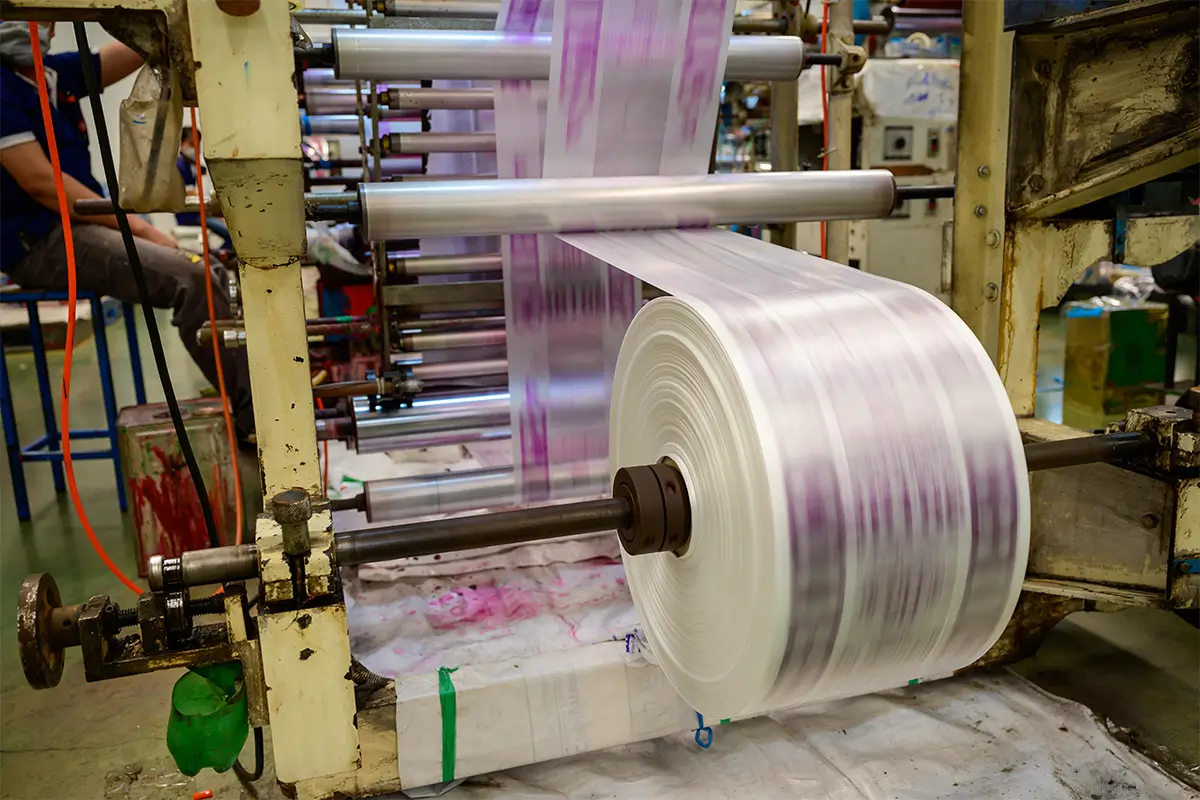
Prime Colors provides an expert Polyethylene (PE) Coating service, a critical process for creating high-performance packaging with superior barrier properties. By laminating a thin, uniform layer of PE onto paper or other substrates, we transform standard materials into durable, protective solutions. This service is essential for industries where product integrity, safety, and shelf life are paramount, particularly in the food, pharmaceutical, and consumer goods sectors.
Our state-of-the-art extrusion coating line ensures a flawless bond and a consistent finish, creating a powerful barrier against moisture, grease, oil, and other external contaminants. Whether for food-grade packaging or industrial applications, our PE coating service enhances the functionality and value of your products.
Key Features & Advantages
Our PE Coating service is defined by its ability to impart crucial protective qualities to paper, making it suitable for a wide range of demanding applications. We focus on delivering a finish that is not only functional but also reliable and compliant with industry standards.
- Excellent Moisture Barrier: The PE layer makes the paper waterproof, protecting contents from humidity and liquids.
- Grease & Oil Resistance: An essential feature for food packaging, preventing leakage and staining.
- Heat Sealability: Allows for the easy and secure sealing of packages, creating tamper-evident and airtight closures.
- Food-Grade Compliance: We use certified food-grade polymers, ensuring our coating is safe for direct contact with food products.
By choosing Prime Colors for your PE coating needs, you ensure your packaging performs reliably, protects your product effectively, and meets the necessary safety standards.
Our Extrusion Coating Process
Our PE coating process utilizes advanced extrusion technology to ensure a high-quality, consistent, and durable laminate, tailored to your product's specific needs.
01. Substrate Preparation
We prepare the base paper, ensuring it is clean and ready for optimal adhesion.
02. Extrusion Lamination
Molten polyethylene is extruded as a thin film directly onto the moving paper web.
03. Cooling & Quality Control
The laminated paper is cooled and checked for coating thickness and bond strength.
Applications & Strategic Value
Our Polyethylene (PE) Coating service is indispensable for a wide array of products where protection and hygiene are non-negotiable. Partnering with us provides a significant strategic advantage in product quality and market compliance.
Common applications include single-use sachets for sugar and salt, wrappers for soaps and detergents, packaging for frozen foods and snacks, and protective liners in pharmaceutical boxes. By using our PE coating service, you enhance your product's shelf life, ensure its safety, and improve consumer trust, ultimately strengthening your brand's position in the market.
Frequently Asked Questions
Yes, absolutely. We use 100% food-grade polyethylene polymers and adhere to strict hygiene standards during the coating process, making our service fully compliant and safe for direct contact with food products as per FSSAI regulations.
Yes, our machinery is capable of applying a PE coating to either one side (C1S) or both sides (C2S) of the paper. Coating both sides provides a complete barrier, which is ideal for applications requiring maximum protection against moisture, such as for frozen food packaging.
PE coating involves laminating a solid film of plastic onto the paper, creating a more durable, flexible, and consistent barrier that is also heat-sealable. Wax coating involves impregnating the paper with wax, which can be less resistant to cracking at folds and is not typically as strong a barrier.
Printing is typically done on the paper *before* the PE coating is applied. The clear polyethylene layer then protects the print. While some specialized inks can print on top of PE, pre-coating printing is the standard and most effective method for high-quality graphics.
Recycling PE coated paper requires specialized facilities that can separate the plastic layer from the paper fibers. While it is technically recyclable, its recyclability depends on the capabilities of the local recycling infrastructure. We can consult on more sustainable options if required.
